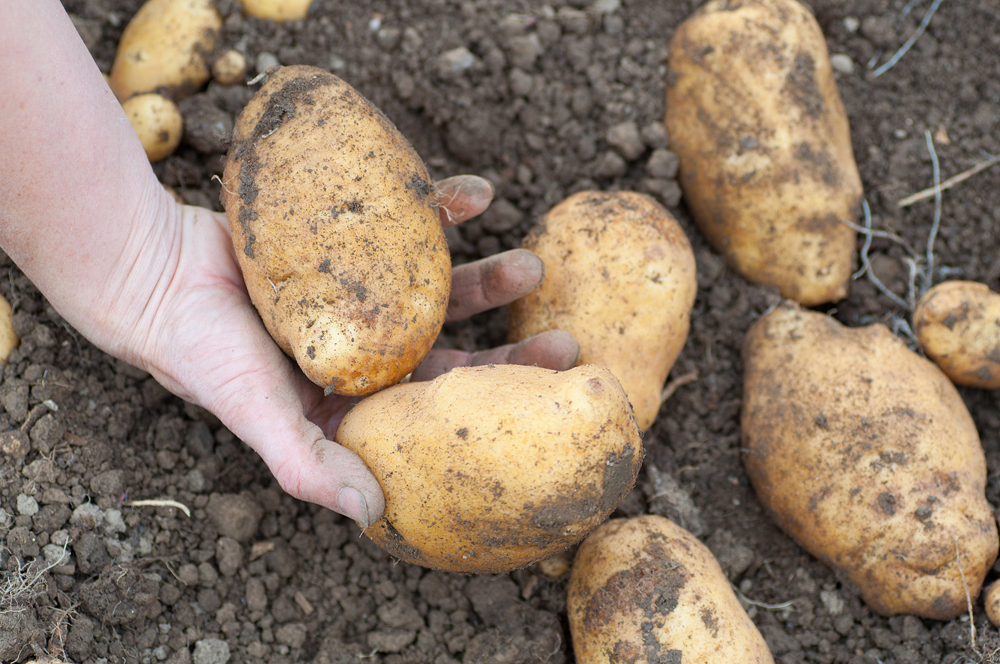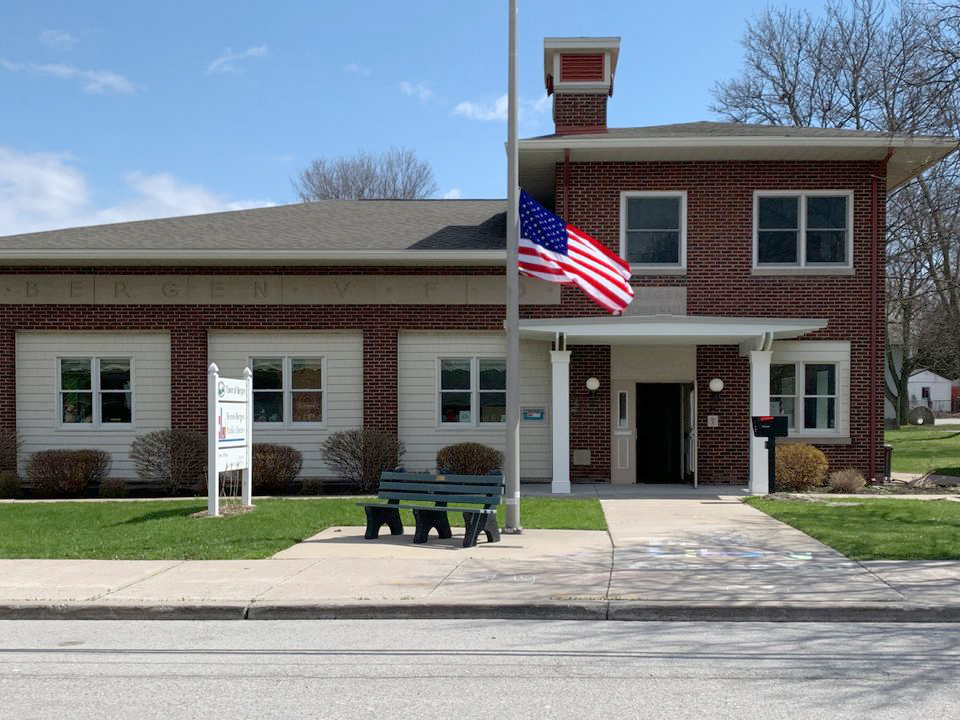Recollections of potato harvesting in the 1950s

In 1953 and 1954, I tried my hand (and body) at farm work. I remember that at a certain age, maybe 14, one had to get a “working permit” issued by NY State to work on a farm. I may have obtained one to work at the Hodges farm, which was a short distance east of my home at 134 Coolidge Avenue in Spencerport. Only the land of the Perkins farm, consisting of an apple, pear, and cherry orchard, was between my home and the potato fields on the Hodges property.
Richard “Dick” Hodges had been my classmate since kindergarten and was my teammate on the SCS soccer team. We were freshmen in 1953 and sophomores in 1954. When we got to our senior year in 1956, we were each regulars, Dick as one of two fullbacks, and I was the center of three midfielders (called halfbacks then). When we were younger, I remember visiting Dick for haying and riding on the hitch of a Farmall H as Dick drove the tractor, pulling a flatbed trailer, picking up bales from the baler pulled by another tractor. All of the Hodges’ family tractors were Farmalls made by International Harvester in Chicago.
For many years, the Hodges family had farmed land on both sides of Nichols Street (Route 31) south of Spencerport in Ogden. Dick’s grandfather, Roy Hodges, lived with his wife on the north side of the street at the east end of the farm complex next to the present SCS bus facility on a rise. A few barns were west and slightly north of Roy Hodges’ home and east of the home of Wendell Hodges, Roy’s son. A historical marker was on the north side of the road in front of Wendell’s house. It noted the former location of the home of Ogden author John T. Trowbridge, who wrote Darius Green & His Flying Machine and other works.
About one-quarter mile west and on the south side of the road was the home of Dick’s father, Floyd Hodges. Dick had one younger sister. Wendell had three daughters; Judy was older than me, Carol was in my class, and Nancy was younger. The Hodges may have been dairy farmers at one time, but I have no memory of cows.
We harvested potatoes from two different fields, one on the hill near the present field, south of the current SCS campus athletic fields, and the other on the approximate location of the Cosgrove Middle School near the road from Gillett Road to the village business district.
As I recall, we started about 8 a.m. and worked until noon and then again in the afternoon for about four hours. I was 14 or 15 in prime condition on a school holiday (Columbus Day). Twenty or more young people comprised the workforce, working a row behind a tractor-pulled potato digger. Now potato diggers dig multiple rows, but in the era I am describing, only one row was dug at a time. The digger had a pointed front that penetrated four to six inches into the soil of the raised bed potato rows. Dirt, rocks, potatoes, clumps of hard-packed dirt, and vines were propelled onto a chain-like moving bed that rotated along a track on each side of the steep side of the machine. Most of the dirt fell through the moving bed to the ground.
The digger had steel support beams that supported the two wheels (one on each side) and were forged together toward the forward portion of the machine before it merged into the part that hooked onto the tractor hitch.
We (the pickers) followed on our knees, shaking vines off the potatoes and placing the potatoes in our peck baskets (a quarter of a bushel). The baskets and bushels were all made of wood. When you filled a bushel, it was placed to one side of the row and picked up by a worker who lifted it and put it on a four-wheel flatbed trailer being pulled by a tractor.
We had to keep track of our bushels and were paid eight cents per bushel in 1953 and 10 cents in 1954. Richard Bassett was a little older than me and lived on Brower Road. He kept track of his bushels with a pencil on the side of a bushel and then couldn’t find the one he had marked.
One day per year was enough for me – a total of two days over two years. I was dead tired at the end of the day. I have no recollection of the amount I earned, but it couldn’t have been much.
The Hodges’ houses still exist, Jim Colby bought most of the Hodges farm in the 1980s, and I represented him on the purchase. He later transferred the land north of the road to his daughter, Jean. She built a home near the east line and then sold the portion north of her new home to the school district. The remainder on the side of the road is worked by Colby Homestead Farms, Inc. (Chuck and Bob Colby).
In about 1959, I was with Alvin “Curly” Zarnstorff on the roof of the former Roy Hodges home about mid-day when we heard a very loud explosion. Curly immediately exclaimed, “It’s the fireworks plant on Big Ridge Road!” He scrambled down the ladder and headed for Big Ridge Road. I stayed on the roof and watched the smoke rise in the north. I have no remembrance of how I got home since I had come in Curly’s truck – probably walked.
Dick Hodges lives in Union Springs in Cayuga County and is still married to Joyce Rathbun, also a member of SCS Class of 1957.
Someone once told me that after working on a potato harvest, they could never eat another potato. That has never bothered me.





